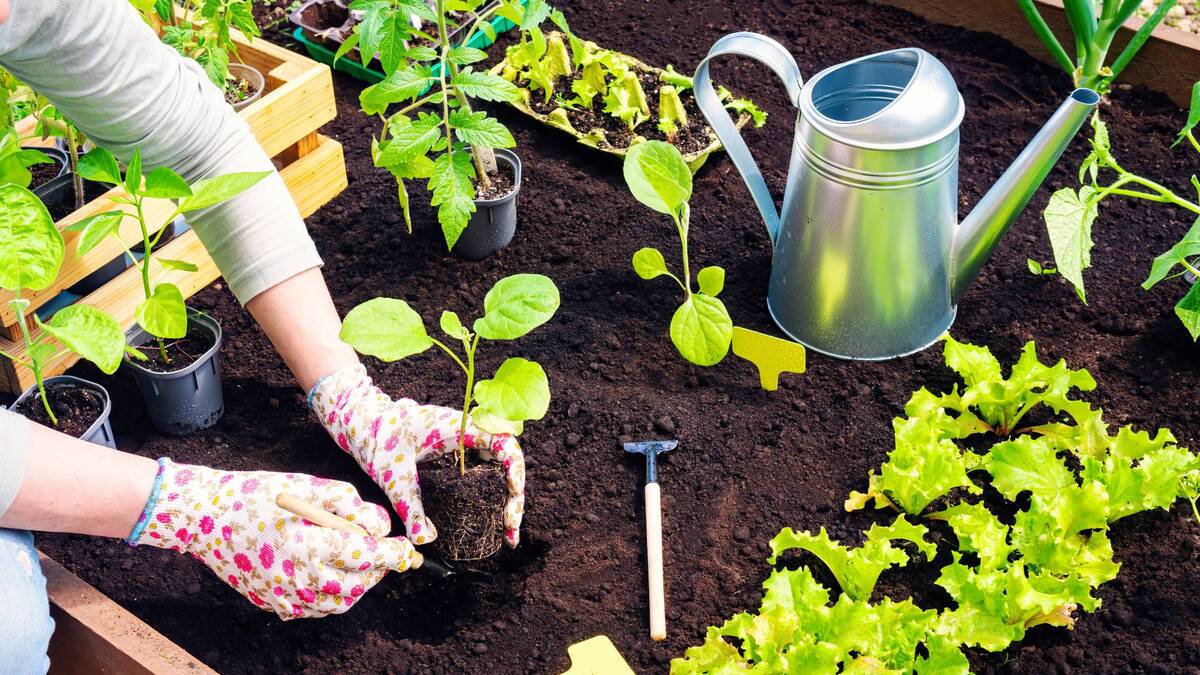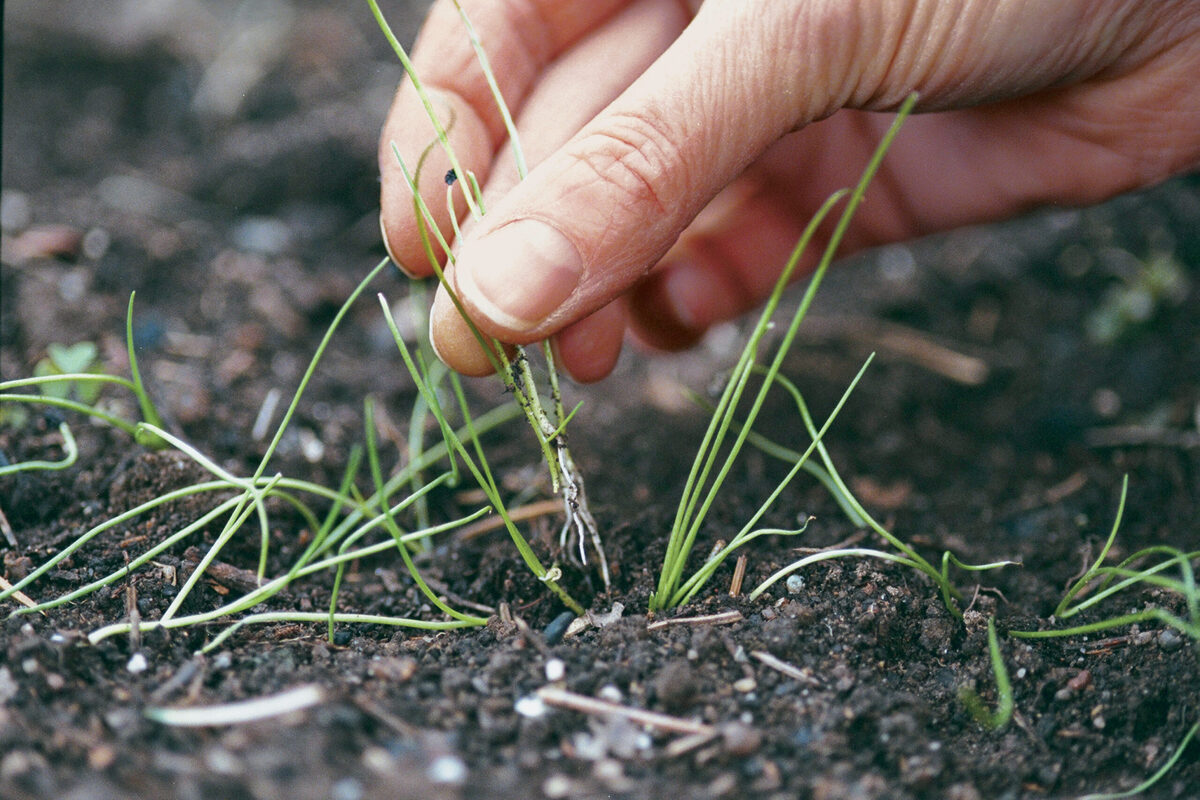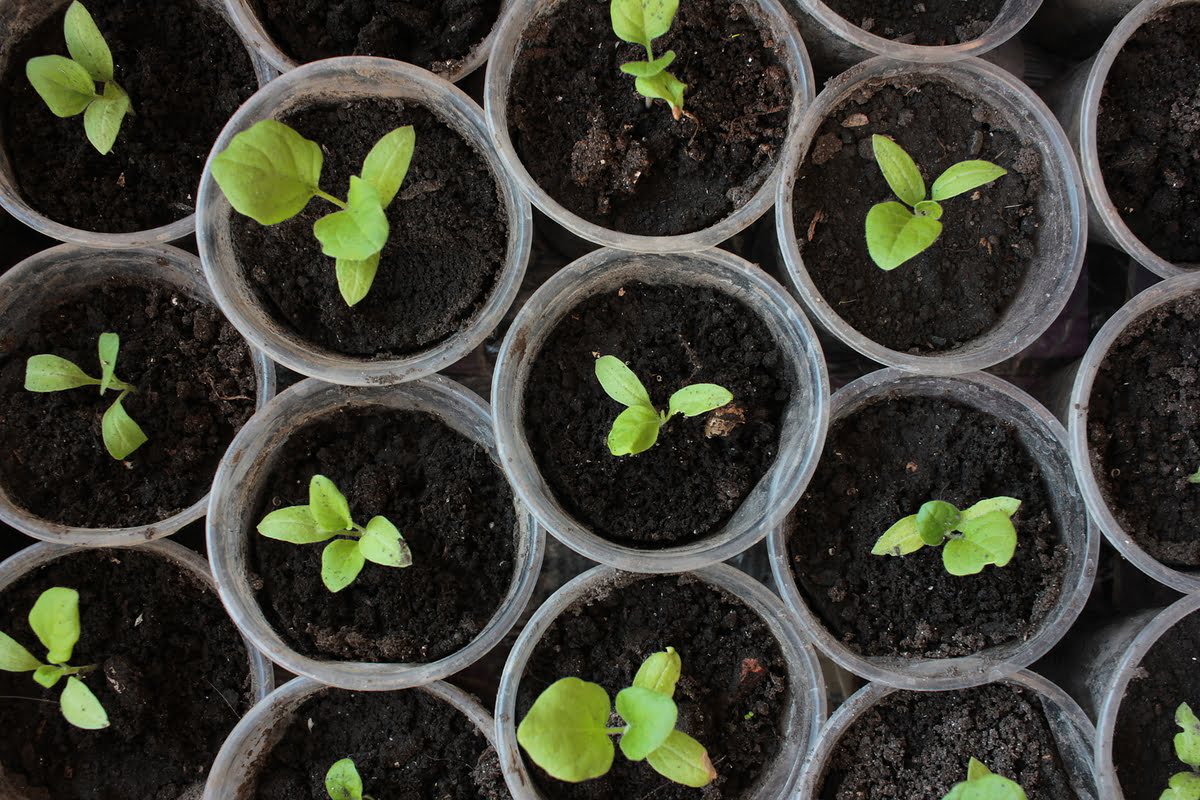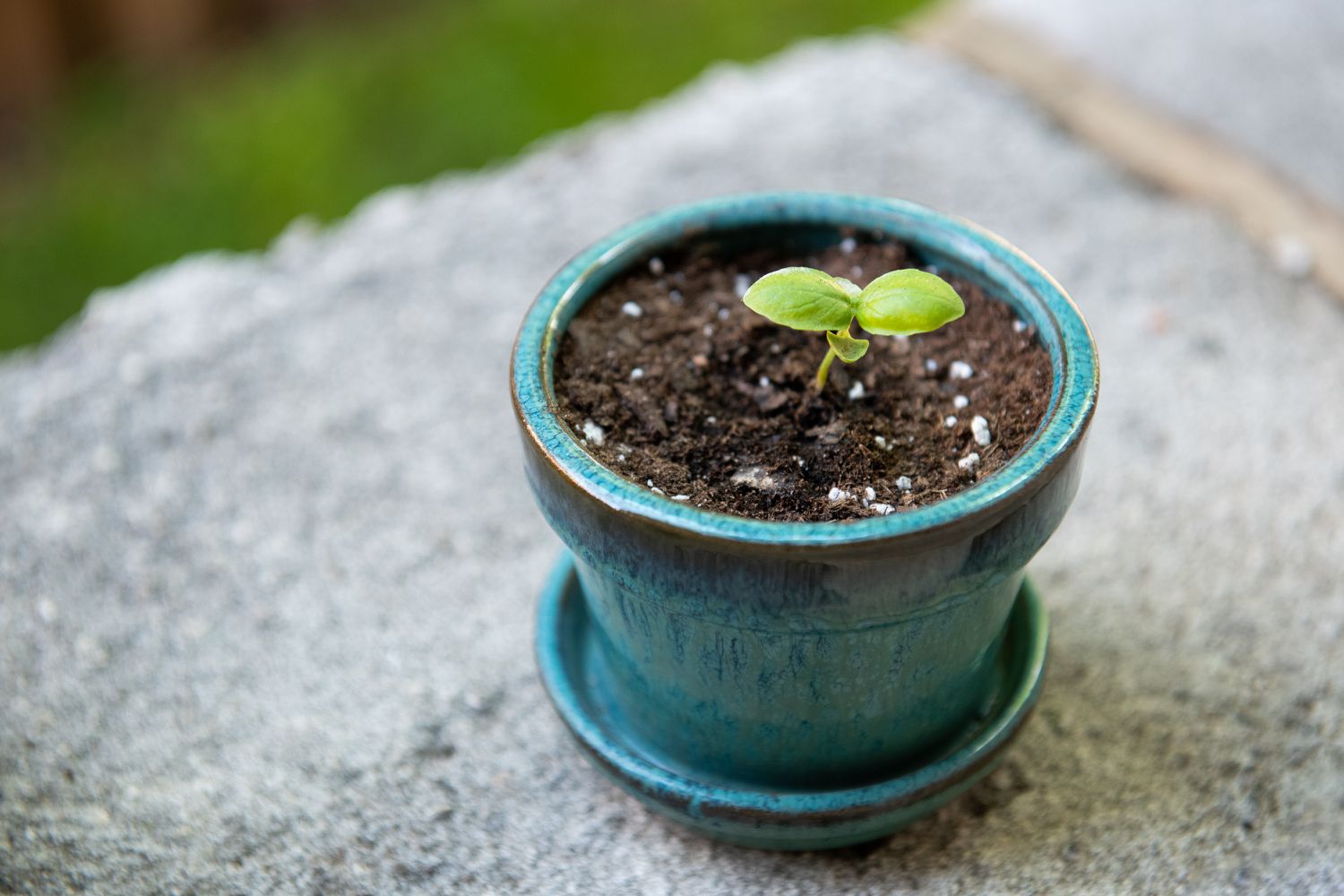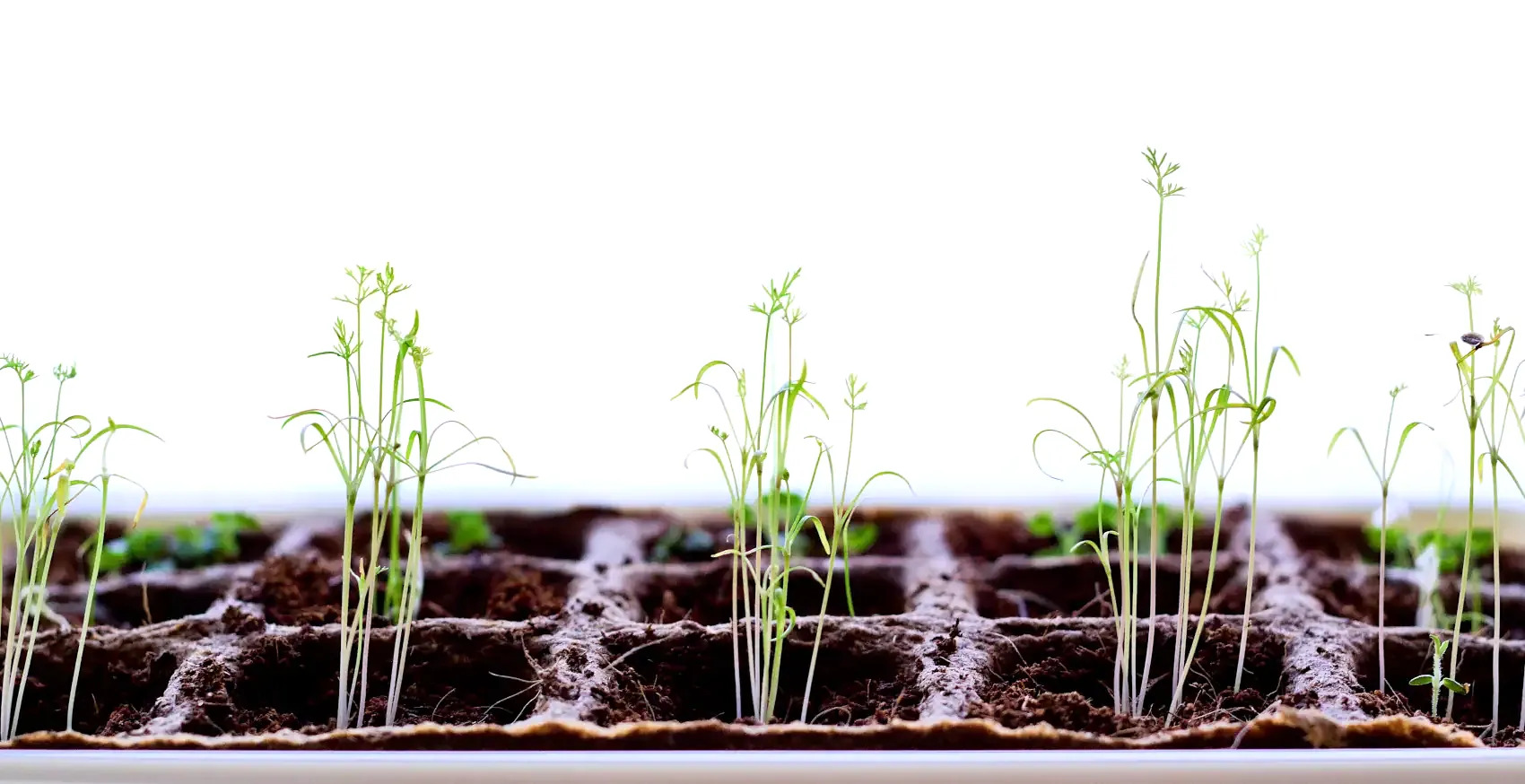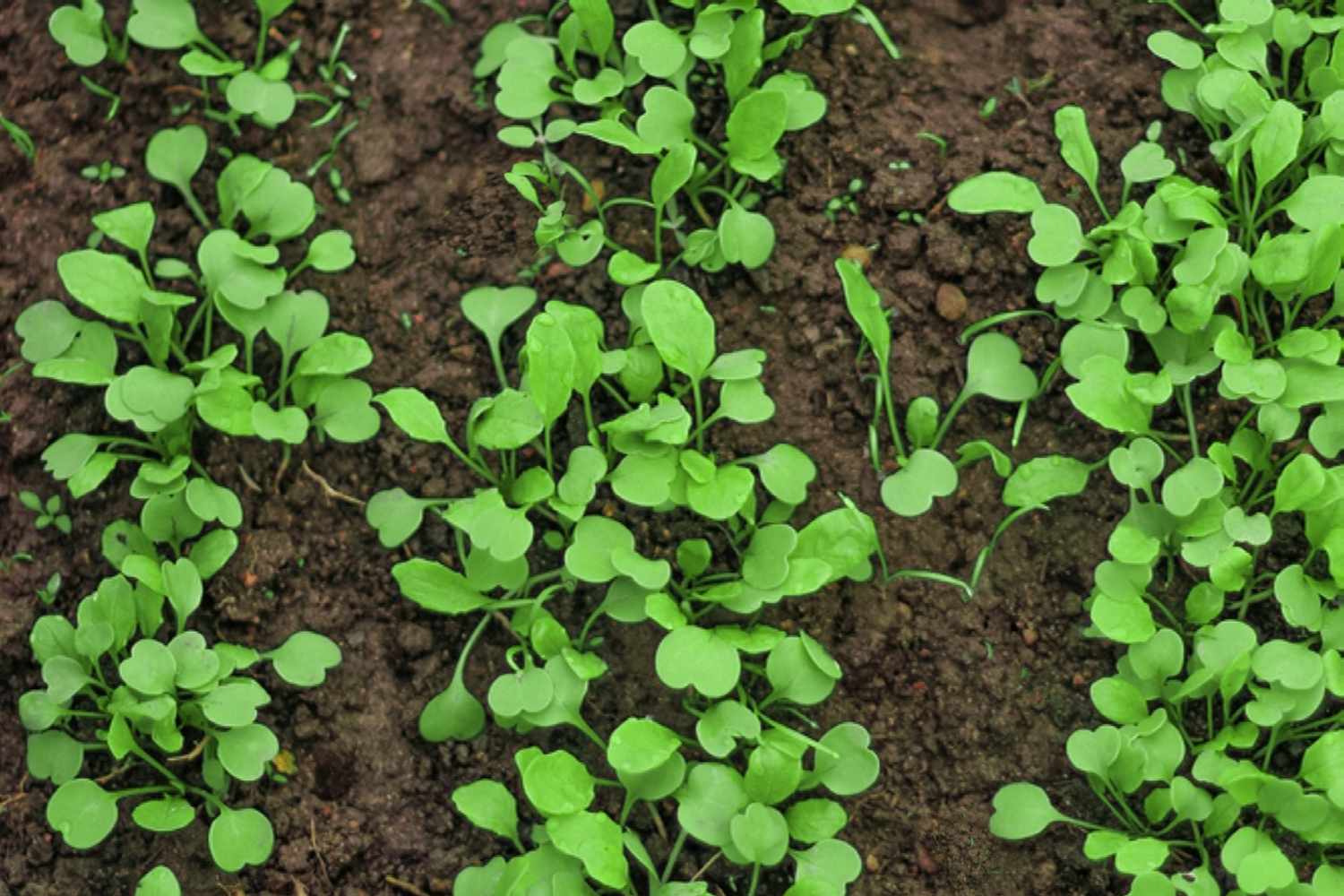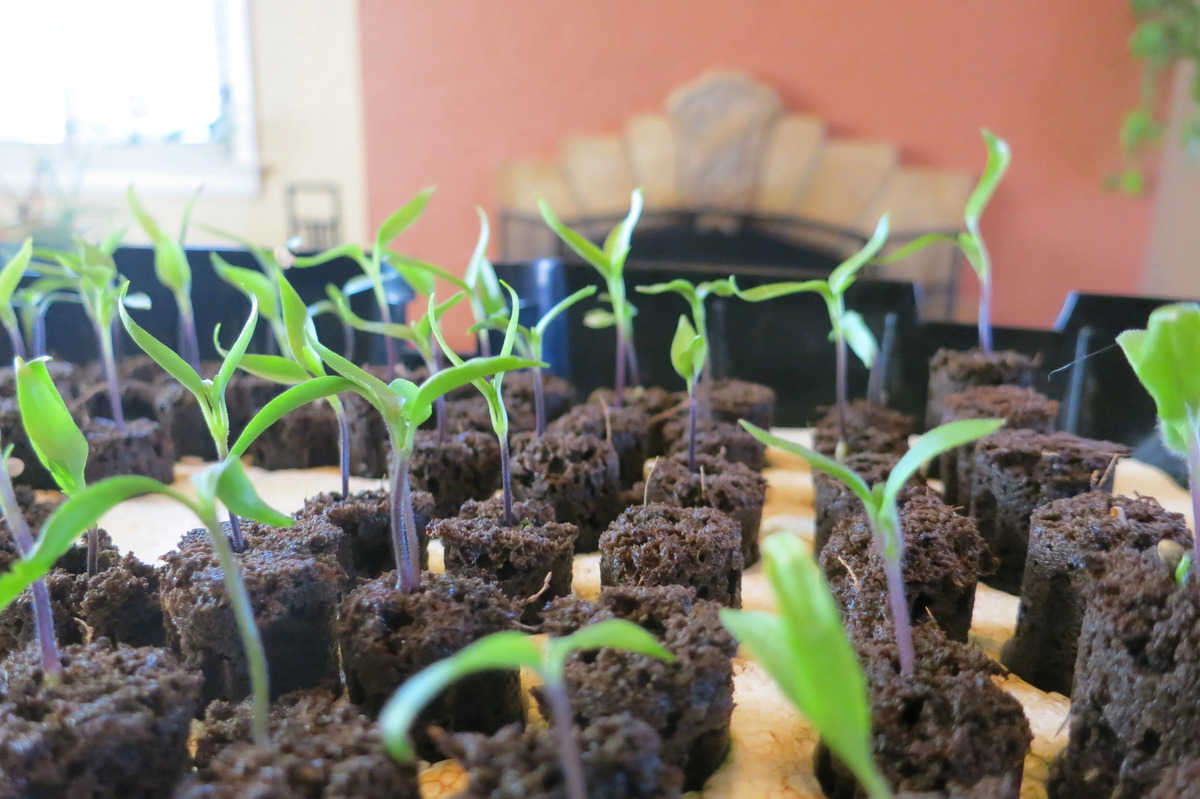Home>Gardening Techniques>Plant Care>When To Fertilize Onion Seedlings
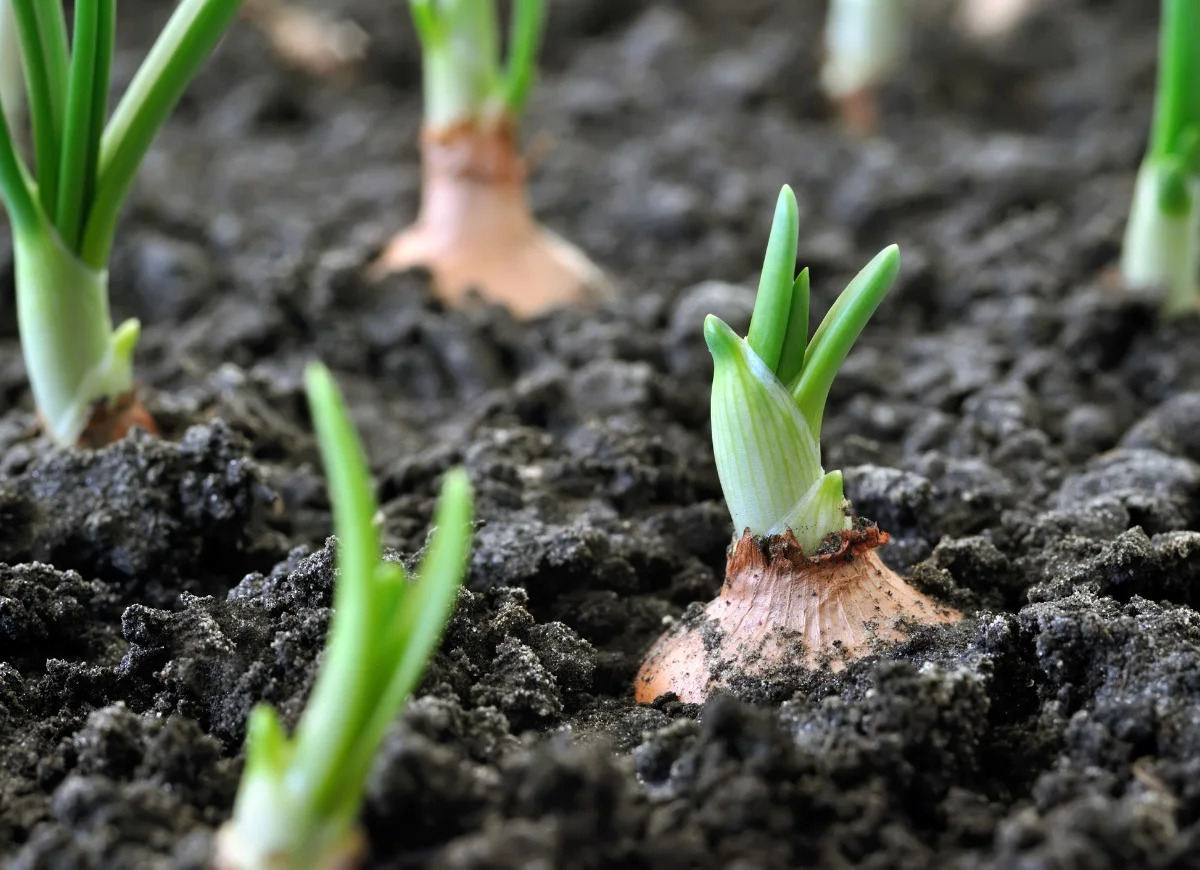

Plant Care
When To Fertilize Onion Seedlings
Modified: January 22, 2024
Discover the best time to fertilize your onion seedlings and learn essential plant care tips to ensure healthy growth and abundant harvest.
(Many of the links in this article redirect to a specific reviewed product. Your purchase of these products through affiliate links helps to generate commission for Chicagolandgardening.com, at no extra cost. Learn more)
Table of Contents
Introduction
Welcome to the world of onion seedlings! If you are a plant enthusiast or a gardener, you know that nurturing seedlings is a crucial stage in the life of any plant. Onions are no exception, and proper care during this stage is essential for healthy plant development and a bountiful harvest.
One vital aspect of caring for onion seedlings is fertilization. Fertilizing at the right time and with the appropriate nutrients can significantly enhance the growth and overall health of your onion plants. However, knowing when and how to fertilize can be a bit overwhelming, especially if you are a beginner.
This comprehensive guide will provide you with all the necessary information you need to make informed decisions when it comes to fertilizing your onion seedlings. We will discuss the factors to consider, the optimal timing for fertilization, signs of nutrient deficiency, types of fertilizers to use, proper application methods, and some important precautions and tips.
So, whether you are new to gardening or just want to brush up on your knowledge, read on to discover how you can ensure the vitality and success of your onion seedlings through effective fertilization.
Factors to Consider
Before diving into the specifics of fertilizing your onion seedlings, it’s important to consider several factors that can influence their nutrient requirements. By taking these factors into account, you can tailor your fertilization approach to meet the unique needs of your onion plants.
Soil Type: The type of soil you have plays a significant role in determining the availability of nutrients to your onion seedlings. Different soil types have varying levels of organic matter, pH levels, and nutrient contents. Conducting a soil test can help you determine the nutrient composition and pH level of your soil, allowing you to make necessary amendments to create optimal growing conditions for your onion seedlings.
Climate: The climatic conditions in your area affect the growth rate and nutrient requirements of your onion seedlings. Onions thrive in cool to mild temperatures, and excessive heat or cold stress can impede their development. Consider the typical weather patterns in your region and adjust your fertilization regimen accordingly.
Growing Method: The growing method you choose for your onion seedlings can impact their nutrient needs. Whether you are growing them in containers, raised beds, or directly in the ground, each method requires a different approach to fertilization. Container-grown onions may have limited access to nutrients compared to those grown in the ground, so it’s essential to provide adequate fertilization based on your chosen method.
Varietal Differences: Not all onion varieties have the same nutritional requirements. Some may be more tolerant of nutrient deficiencies or have specific needs. It’s important to understand the characteristics of the onion variety you are growing to determine the appropriate fertilization approach.
Stage of Growth: The growth stage of your onion seedlings also impacts their nutrient requirements. Young seedlings have different needs compared to mature plants. Adjust your fertilization regimen as your seedlings progress through their growth stages to ensure they receive the nutrients they need at each stage.
By considering these factors, you can better understand the unique needs of your onion seedlings and make informed decisions when it comes to fertilizing them. Now that we’ve explored the factors to consider, let’s move on to the optimal timing for fertilizing onion seedlings.
Timing for Fertilizing Onion Seedlings
Timing is crucial when it comes to fertilizing your onion seedlings. Providing nutrients at the right stage of growth ensures that your plants receive the necessary resources for healthy development. Here, we will discuss the ideal timing for fertilizing your onion seedlings.
Pre-Planting: Before planting your onion seedlings, it’s beneficial to prepare the soil by incorporating organic matter and a balanced fertilizer. This helps provide essential nutrients to the young plants as they establish their root systems.
Early Growth Stage: Once your onion seedlings have been transplanted into the soil or have emerged from direct sowing, you can begin fertilizing them. Typically, this stage starts around 2 to 4 weeks after planting. The first feeding should consist of a nitrogen-rich fertilizer to promote leafy green growth. Be sure to follow the instructions on the fertilizer packaging for the appropriate application rates based on the size and number of seedlings.
Mid-Growth Stage: As your onion seedlings continue to grow, usually after 6 to 8 weeks, it’s time to provide a balanced fertilizer to support overall plant development. Look for a fertilizer that includes a mix of nitrogen, phosphorus, and potassium (N-P-K) in a ratio suitable for onion plants, such as 10-10-10 or 14-14-14. Apply the fertilizer according to the label instructions, taking care not to over-fertilize, as it can lead to nutrient imbalances and damage the plants.
Bulb Formation Stage: Near the end of the growing season, approximately 10 to 12 weeks after planting, your onion seedlings will enter the bulb formation stage. At this point, it’s essential to reduce nitrogen fertilizer inputs and focus on phosphorus and potassium, as these nutrients promote root and bulb development. Look for a fertilizer with a higher percentage of phosphorus and potassium, such as a 5-10-10 or 0-20-20 blend, and apply it following the recommended rates provided on the packaging.
It’s important to note that the timing for fertilizing onion seedlings may vary based on the specific variety and growing conditions. Always observe the growth and development of your plants to determine the optimal timing for providing nutrients. Regularly monitor your plants for signs of nutrient deficiency to take corrective actions as needed, which we will discuss in the next section.
Signs of Nutrient Deficiency
It is important to monitor your onion seedlings for any signs of nutrient deficiency. Identifying and addressing nutrient deficiencies early on can help prevent any adverse effects on the growth and development of your plants. Here, we will discuss some common signs to look out for:
- Nitrogen Deficiency: When your onion seedlings lack nitrogen, their growth can be stunted, and the leaves may turn pale or yellowish. You may notice slower growth and small-sized onions. Nitrogen deficiency can also cause older leaves to wither and fall off prematurely.
- Phosphorus Deficiency: Insufficient phosphorus can lead to stunted growth, thin stems, and a delay in bulb development. The leaves may appear dark green or purplish and may curl or become distorted. Additionally, the overall yield of your onion plants may be reduced.
- Potassium Deficiency: Inadequate potassium can result in yellowing or browning of leaf margins and tips. The leaves may become brittle and develop a scorched appearance. Onion plants with potassium deficiency may also be more susceptible to disease and pests.
- Magnesium Deficiency: Magnesium deficiency is characterized by yellowing between the veins of older leaves. The yellowing begins at the leaf edges and progresses inward, while the veins remain green. Early detection and correction of magnesium deficiency are crucial to prevent further damage.
These are just a few examples of nutrient deficiencies that onion seedlings may experience. Each nutrient deficiency manifests in specific symptoms, and it is important to closely observe your plants to identify any signs of deficiency. If you notice any abnormalities in the growth, color, or overall appearance of your onion seedlings, consider conducting a soil test to determine the nutrient levels in your soil and take appropriate measures to address any deficiencies.
Remember, nutrient deficiencies can be prevented or corrected through proper fertilization and soil amendments. By providing adequate and balanced nutrition, you can ensure the healthy growth and development of your onion seedlings.
Types of Fertilizers for Onion Seedlings
When it comes to fertilizing your onion seedlings, there are various types of fertilizers to choose from. Understanding the different options available can help you make an informed decision based on your specific needs and preferences. Here are some common types of fertilizers for onion seedlings:
- Organic Fertilizers: Organic fertilizers are derived from natural sources, such as compost, manure, or plant materials. They provide a slow release of nutrients and help improve soil structure and fertility over time. Organic fertilizers are a popular choice for gardeners who prefer natural and sustainable gardening practices. Examples include composted manure, fish emulsion, and seaweed-based fertilizers.
- Granular Fertilizers: Granular fertilizers are dry, solid fertilizers that are typically spread on the soil surface. They release nutrients slowly as the granules dissolve, providing a gradual and consistent supply of nutrients to the onion seedlings. Granular fertilizers often come in various formulations, such as balanced blends (e.g., 10-10-10) or specialty blends designed for specific growth stages.
- Liquid Fertilizers: Liquid fertilizers are concentrated solutions that are mixed with water and applied directly to the onion seedlings. They provide a quick and easily absorbed source of nutrients. Liquid fertilizers can be applied through foliar spraying or by drenching the soil around the plants. They are a convenient option for gardeners who prefer frequent and precise nutrient applications.
- Synthetic Fertilizers: Synthetic fertilizers are manufactured chemically, providing precise nutrient ratios and immediate availability to the plants. These fertilizers often come in various formulations, such as ammonium nitrate, urea, or triple superphosphate. Synthetic fertilizers are commonly used in large-scale agricultural operations but can also be suitable for home gardeners who want quick results.
Each type of fertilizer has its advantages and considerations. Organic fertilizers promote long-term soil health and sustainability, while synthetic fertilizers offer precise control and fast nutrient delivery. Consider your gardening goals, environmental impact, and personal preferences when selecting the most appropriate fertilizer for your onion seedlings.
It’s important to follow the instructions provided on the fertilizer packaging to ensure proper application rates and timing. Over-fertilizing can lead to nutrient imbalances and may harm the onion seedlings, so err on the side of caution and apply fertilizers as recommended.
Now that you are familiar with the different types of fertilizers available, let’s move on to the next section, where we will discuss the proper methods of applying fertilizer to your onion seedlings.
Applying Fertilizer to Onion Seedlings
The proper application of fertilizer is essential to ensure that your onion seedlings receive the nutrients they need for healthy growth. Here are some guidelines to follow when applying fertilizer to your onion seedlings:
1. Read the Instructions: Before applying any fertilizer, carefully read and follow the instructions provided on the packaging. Different fertilizers may have specific application rates and timing recommendations.
2. Apply Fertilizer at the Base: When applying fertilizer to onion seedlings, it is generally best to target the fertilizer at the base of the plants rather than directly on the foliage. This helps prevent leaf burn and allows the roots to absorb the nutrients more efficiently.
3. Water the Plants: Before applying fertilizer, it can be helpful to water the soil around the onion seedlings. This moistens the soil, making it easier for the nutrients to reach the root zone. Additionally, watering after application helps to dissolve and distribute the fertilizer evenly.
4. Avoid Over-Fertilization: Over-fertilizing can be detrimental to the growth of your onion seedlings. It can lead to nutrient imbalances, burn the roots, and even stunt the plants’ growth. Always follow the recommended application rates provided on the fertilizer packaging and resist the temptation to add more.
5. Use a Measuring Tool: To ensure accurate and consistent application, consider using a measuring tool, such as a garden scoop or a handheld spreader. This helps you distribute the fertilizer evenly without excessive or insufficient amounts in certain areas.
6. Consider Side-Dressing: Side-dressing is a technique where you apply fertilizer to the soil around the onion plants after they have started growing. This can be done by making a shallow trench alongside the rows of seedlings and placing the fertilizer in the trench. Cover it with soil and water thoroughly.
7. Monitor and Adjust: Regularly monitor the growth and health of your onion seedlings. Observe their response to the fertilizer application and make any necessary adjustments. If you notice signs of nutrient deficiency or excess, consider modifying your fertilization approach to ensure the best results.
Remember, proper application of fertilizer is crucial for the health and development of your onion seedlings. By following these guidelines, you can provide the necessary nutrients while minimizing the risk of detrimental consequences.
Now that you know how to apply fertilizer to your onion seedlings, let’s move on to the next section, where we will discuss some precautions and tips to consider for successful fertilization.
Precautions and Tips for Fertilizing Onion Seedlings
Fertilizing your onion seedlings is a critical step in their care, and it’s important to take certain precautions and follow some helpful tips to ensure successful fertilization. Here are some precautions and tips to consider:
1. Start with Healthy Seedlings: Ensure that your onion seedlings are healthy and well-established before applying fertilizer. Weak or stressed plants may not be able to effectively utilize the nutrients, so it’s crucial to have a strong foundation of healthy seedlings.
2. Follow Recommended Rates: Always follow the recommended application rates provided on the fertilizer packaging. Applying too much fertilizer can lead to nutrient imbalances and damage the seedlings, while applying too little may not provide adequate nutrition. Stick to the recommended rates to avoid any complications.
3. Water Properly: Adequate and consistent watering is essential for nutrient absorption. Provide regular irrigation to your onion seedlings, especially after fertilizing, to help dissolve and distribute the nutrients in the soil. Avoid overwatering, as it can lead to waterlogged soil and root rot.
4. Maintain pH Balance: Onions prefer a slightly acidic pH level between 5.5 and 6.5. Conduct a soil test to determine the pH of your soil and make any necessary adjustments. If your soil is too alkaline, you may consider adding amendments, such as elemental sulfur or peat moss, to lower the pH level.
5. Apply Fertilizer Evenly: Ensure that the fertilizer is evenly distributed around the onion seedlings. Concentrated clumps can lead to nutrient imbalances and uneven growth. Use a gentle hand to spread the fertilizer or consider using a handheld spreader for more precise application.
6. Incorporate Organic Matter: Incorporating organic matter into the soil can provide long-term benefits for your onion seedlings. Compost, leaf mold, or well-rotted manure are excellent sources of organic matter that help improve soil structure, water retention, and nutrient availability.
7. Monitor and Adjust: Regularly monitor the growth and appearance of your onion seedlings. Observe any changes or signs of nutrient deficiencies or excess. Adjust your fertilization regimen as needed to provide the appropriate nutrients and maintain a healthy plant balance.
8. Consider Mulching: Applying a layer of organic mulch, such as straw or shredded leaves, around the base of the onion seedlings can help conserve moisture, suppress weeds, and provide a slow release of nutrients as the mulch breaks down.
9. Practice Crop Rotation: To reduce the risk of nutrient depletion and disease buildup, practice crop rotation in your garden. Avoid planting onions or other related crops in the same location year after year. Instead, rotate them with unrelated crops to promote healthier soil and better nutrient utilization.
By following these precautions and tips, you can optimize the fertilization process and set your onion seedlings up for success. Remember, every garden is unique, so adapt these recommendations based on your specific growing conditions and the needs of your onions.
Now that you are equipped with the necessary precautions and tips, you can confidently fertilize your onion seedlings and nurture them towards a productive and rewarding harvest.
Conclusion
Fertilizing your onion seedlings is a crucial step in their growth and development. By providing the right nutrients at the right time, you can ensure healthy plants and a bountiful harvest. Consider the factors that influence your seedlings’ nutrient requirements, such as soil type, climate, and growing method. Pay attention to the timing of fertilization, providing different nutrients at each growth stage, from pre-planting to bulb formation. Recognize the signs of nutrient deficiencies, such as yellowing leaves or stunted growth, and address them promptly to prevent further damage.
There are different types of fertilizers available, including organic, granular, liquid, and synthetic options. Choose the one that aligns with your gardening goals and preferences. Apply fertilizer at the base of the plants, following recommended rates. Take precautions to avoid over-fertilization and ensure even distribution. Maintain proper watering, pH balance, and incorporate organic matter into the soil. Monitor the plants’ response to fertilization and make adjustments as necessary.
With these precautions and tips in mind, you can confidently fertilize your onion seedlings and nurture them towards healthy growth. Remember, every garden is unique, and it may require some experimentation and observation to determine the best fertilizer and approach for your specific onion variety and growing conditions.
Take the time to care for your onion seedlings, providing them with the nutrients they need, and you will be rewarded with robust plants and a successful onion harvest. Happy gardening!
